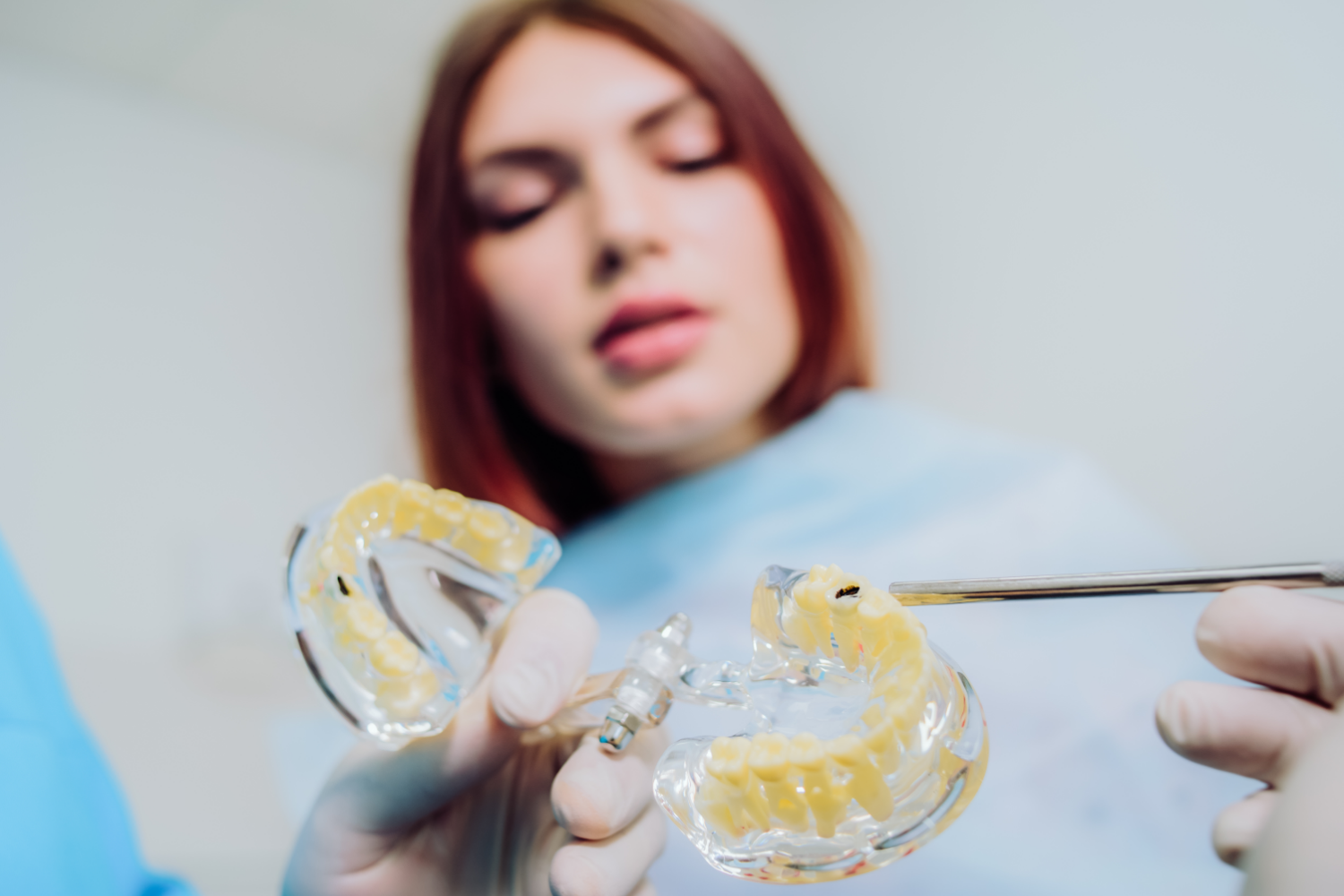There you are, sitting in the dentist chair when all of a sudden you hear those dreaded words: “Looks like you have a cavity here…” Cavities are very common. The Centers for Disease Control (CDC) estimate that at least 90% of adults have had at least one cavity. What’s worse is that they estimate 25% of adults have cavities that have gone untreated. But how do you know if you have a cavity? Have you ever wondered what a cavity in your tooth even looks like?
What Is A Cavity?
When holes form in the surface of your teeth, they are called cavities. The terms cavity and tooth decay are often used interchangeably because a cavity is usually how tooth decay represents itself. Cavities begin very small and cause almost no symptoms. Sometimes people don’t even know they have a cavity until they visit their dentist for a routine checkup. Cavities start when the bacteria in your mouth turns into plaque. If not removed by regularly brushing and flossing your teeth, that bacteria-laden plaque will eat away at the enamel, causing the tooth to decay. If not caught in time, the decay progresses, the hole grows larger and deeper, and soon, symptoms will start to develop.
What Does a Cavity Look Like?
When a cavity first starts, you most likely won’t even be able to tell. They come on gradually. A young cavity can look like a whitish, almost chalky appearance on the enamel of your tooth. They don’t just happen on the chewing surface either. Cavities can appear anywhere on the surface of the teeth. As the tooth decay gets more advanced and the cavity grows deeper, you may notice a small brown, black or gray hole. They can be very small but go deep into the dentin of the tooth, which is what eventually causes symptoms. But sometimes cavities can be larger, and more shallow. In any case, most people don’t know what a cavity looks like because they never see them! That’s why it’s so important to visit your dentist for regular checkups.
How Can You Tell If You Have a Cavity?
One way to tell if you have a cavity is to watch for symptoms. Sometimes symptoms of a cavity are so minor they are easily dismissed. Tooth sensitivity to hot or cold foods, or mild pain when chewing is often one of the first signs of tooth decay. This pain and sensitivity can come and go, so people often assume it’s a fluke and they don’t act on it right away. If left alone for too long, eventually it will explode into a full-on toothache. It’s this pain that usually drives people into the dentist’s chair. It’s important to note that a cavity will not go away on its own. Once the enamel is worn away from tooth decay, there is no going back.
How To Avoid Tooth Decay
The best way to avoid tooth decay and prevent cavities from developing is to practice good dental hygiene at home. When we eat, food particles get stuck in the crevices of our teeth and along the gum line. If these particles are not removed by brushing twice a day with fluoride toothpaste, bacteria may start to build up in your mouth. Flossing your teeth daily will also help keep your mouth in tip-top shape. Going to see your dentist twice a year is also an important part of keeping cavities at bay. They will take a good look at your teeth and check for holes and other signs that a cavity may be forming. They may decide to give you a dental x-ray to check for signs of decay not visible to the naked eye.
Another way to reduce your risk of tooth decay is to watch the type of foods you eat. Foods that are high in sugar or acid can cause enamel to wear down over time. Eating these types of food may put your teeth at greater risk for decay. Rinsing your mouth with, and drinking enough, water after eating helps to wash away the sugar and acid from the surface of your teeth. What if you don’t have any water handy? Try chewing sugar-free gum. Not only will it help battle dry mouth, but it also stimulates saliva production, which helps to clean your teeth after eating.
Cavities Are a Common Problem
Cavities are a very common problem, but now you have the information you need to prevent them from developing! Practicing good dental hygiene at home will help keep your teeth clean and has the added benefit of stopping bad breath. Get your dental checkups twice a year, and mention any tooth pain you might be experiencing. Contact us today to set up your next appointment! If you form those regular good habits early, you’ll enjoy a healthy smile for a long time to come.
